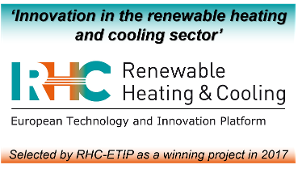- The first ever quantification of the heating and cooling demand in Europe, both for today as well as forecast of their future development.
- The first ever pan-European thermal atlas (Peta) of the heating and cooling demand in Europe.
- The first ever quantification of the excess heat volumes available from power plants, waste incineration, and industry in Europe, all of which can be utilised on district heating networks.
- The first ever quantification of renewable resources available for district heating networks in Europe, including large-scale solar thermal, direct geothermal, and heat pumps.
- The first ever comparison at European level between the cost of heat savings and sustainable heat supply. This comparison is currently a major point of interest in EU energy policy, since it has altered the common belief that heat savings alone will be enough to decarbonise the heat sector.
- The first ever hourly models that simulated the impact of district heating and cooling, including their impact on the electricity and industrial sectors. These models are distributed freely online, thus enhancing the capacity of others to also analyse the impact of district heating and cooling.
- The first ever study to demonstrate how a simultaneous expansion of heat savings, district heating, and heat pumps will result in the cheapest low-carbon heat sector for Europe. The modelling tools used by the European Commission did not have the ability to adequately simulate the expansion of district heating and cooling, so the results from this analysis have already been utilised by EU policymakers to inform their ongoing work.

As recognition of the innovative methodology that HRE4 developled and deployed the Steering Committee of the European Technology and Innovation Platform on Renewable Heating & Cooling (RHC-ETIP) selected Heat Roadmap Europe 4 as most innovative project in the technology category of hybrid systems in June 2017. Read more here.